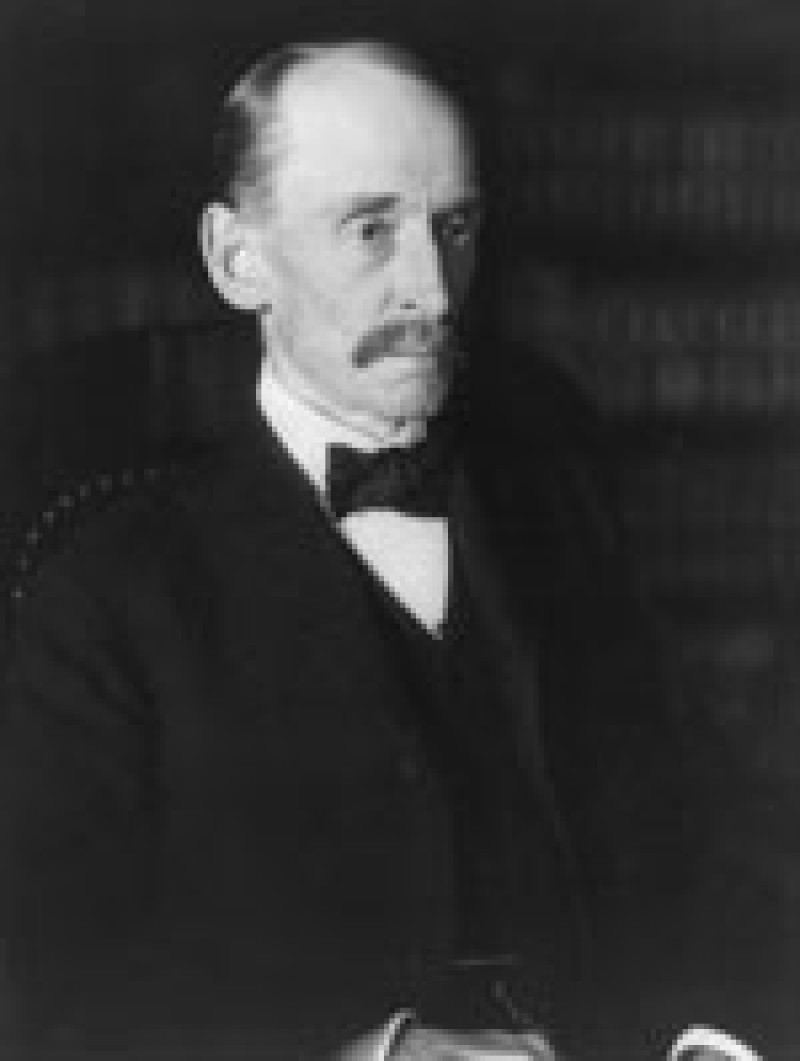William Rufus Day (April 17, 1849 - July 9, 1923)
William Rufus Day, associate justice of the U.S. Supreme Court, was born in Ravenna, Ohio. He graduated from the University of Michigan in 1870 and spent the following year in its Department of Law. After settling in Canton, Ohio, in 1872, he began his law practice. He practiced criminal and corporate law in the growing industrial town for 25 years while participating in Republican politics and becoming a close friend of William McKinley. Day was a legal and political adviser to McKinley as the latter won elections to the U.S. Congress, the governorship of Ohio, and the presidency.
Day became McKinley's first assistant secretary of state on April 23, 1897. As a part of several political moves, McKinley appointed John Sherman (1823-1900) secretary of state to open an Ohio seat in the U.S. Senate, but Sherman was ineffective in that position. Thus, with no diplomatic experience, Day was the defacto secretary and the secretary of state for 20 months during the Spanish-American War. After war was declared, Day argued that the Spanish colonies other than Cuba should be returned to Spain, but he accepted McKinley's harsher terms for peace. His final diplomatic effort was to lead the U.S. peace commission in Paris and sign the peace protocol and Treaty of Paris.
Soon after Day's return from Europe, and despite his hope to return to private life, in February 1899 McKinley appointed Day to the U.S. Court of Appeals for the 6th Circuit.
Roosevelt nominated Day in January 1903 to fill a vacancy on the U.S. Supreme Court. Day sat on the Supreme Court for almost 20 years during an era when the Court made numerous decisions that increased the involvement and police powers of both the federal and state governments in the economy.
Day wrote 439 opinions during his tenure on the court, and only 18 were dissents. Characterized as rigid and formalistic, and best known for his Hammer v. Dagenhart (1917) ruling, Day advanced state regulatory powers and the enforcement of antitrust laws — the only federal economic police power that Day consistently supported.
Day distrusted large corporations and voted with antitrust majorities throughout his time on the court. He sided with the government in the Standard Oil, American Tobacco, and Union Pacific cases in 1911 and 1912 and again in the Southern Pacific case in 1922.
Day believed that Congress could regulate commerce but that constitutional power did not extend to the supervision of production. Day accepted the logic of the U.S. v. E.C. Knight decision (1895) that developed the distinction between commerce and production in the enforcement of the Sherman Antitrust Act. That case grew out of the Federal Child Labor Act of 1916, which prohibited interstate transportation of products manufactured in factories that employed children under the age of 14, or children between 14 and 16 working more than eight hours a day or six days a week. Day was consistent in his belief that the commerce clause could not include regulation of production, even though the products would be transported over state borders. The decision frustrated the efforts of President Woodrow Wilson and the Progressives to control child labor, and it drew a harsh dissenting opinion from Justice Oliver Wendell Holmes (1841-1935).
Day was more comfortable with state regulation of social ills. His rulings in cases of state government intervention affirmed his belief that states could regulate economic power and social problems within individual state boundaries. In Lochner v. New York (1905), Day voted with the minority to limit work in bakeries to 10 hours a day. Day wrote the dissent in Coppage v. Kansas (1915), in which he upheld the constitutionality of the state law to outlaw yellow-dog contracts. Later, in 1921, he asserted the right of a state to regulate drug use in Minnesota ex rel. Whipple v. Martinson. For Day there was a constitutional limit on federal police powers that did not exist for state governments.
Day retired from the Supreme Court in October 1922 and died on Mackinac Island, Michigan.
Biography of William Rufus Day (April 17, 1849 - July 9, 1923)
Citation: R. Michael McReynolds. "Day, William Rufus"; http://anb.org/articles/11/11-00226.html; American National Biography Online Feb. 2000. Access Date: Fri Oct 3 10:05:22 2003. Copyright © 2000 American Council of Learned Societies. Published by Oxford Univeristy Press. All Rights Reserved.
Portrait of William R. Day - Library of Congress, Prints & Photographs Division.

